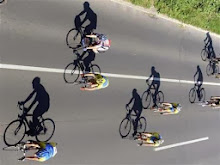The effect on people is significant too - we aren't steel, we're mushy flesh. In the same way that we need to continually equalize our ears to keep the pressure in our sinus cavities more or less the same as the depth of the water we're at, the blood and flesh in our bodies undergoes transformation too. The nitrogen already present in our bodies gets forced together to (ultimately) create bubbles, and that will kill us at the surface if left unattended. That's what is referred to as getting the bends, or in lingo, getting bent.
 |
| Sea Turtle - Robin Ridilla |
All of this to say that you can't fly within 24 hours of diving either, as commercial aircraft cabins are typcially pressurized to 5000-6500 feet in altitude. That's far less pressure than we face on the ground, and can bring back-on some nitogen issues. So when your diving is done...you're still on the ground for 24 hours.
What to do in Palau for 24 hours ?
Kayaking and snorkelling were my answer and I spent an enjoyable day looking at some inland lakes (all saltwater). Snorkeling in caves and under crevices to get at places few see. We explored the outer islands in kayaks and stopped at "Lee Marvin Beach" (Where he filmed Hell in the Pacific) for lunch. A great day and a nice cap to a phenomenal diving experience. We climbed some of the limestone cliffs to see old Japanese WWII bunkers and saw the water wrekcage of a B-24 bomber and landing craft re-supply ships. All the while watching for the more exotic island water-beasts like salt water crocodiles and dugongs. While I didn't see those, there were rays, jellyfish and evidence of octopus. I even finally got some sun-burn - that's hard to acheive deep under-water.


No comments:
Post a Comment